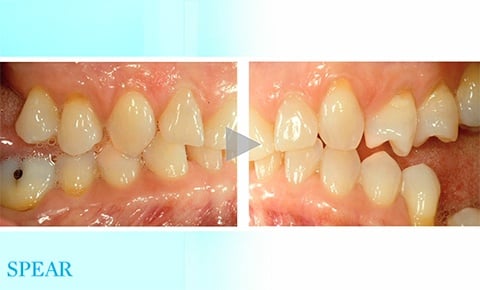
If you have been in dentistry for any time at all, and even outside of dentistry, we have heard the term or acronym “TMJ.” When most people here it, we think jaw joint problems, popping, etc. “TMJ” is an often used and quoted term and referred to by many patients and professionals alike when referring to a bigger and more complex issue that is more appropriately described as “TMD” (Temporomandibular disorder). Well, in this very brief overview, I’ll touch upon “TMJ” and “TMD” and some information about both as well as common signs, and symptoms.
“TMJ” really stands for Temporomandibular joint or the jaw joint that is the connection between the mandible and the temporal skull bone (glenoid fossa/mandibular fossa). The temporomandibular joints are a unique joint and many believe to be the most complex joint in the body because they rotate, translate out of the socket/fossa, and have some movement from side to side. They have an articular disc that is situated between the two bones that is all encased by a dense fibrous capsule.
“TMD” (Temporomandibular disorder) is the more appropriate term that we can use to describe all of the signs, symptoms and issues that can also involve the TMJ. The National institute for Dental Research and Craniofacial Research classify TMD disorders into three categories:
- Myofascial Pain involving discomfort or pain in the muscles that control jaw function (of course, those muscles also have counter balancing muscles that help support their function)
- Internal derangement of the joint involving the disc being displaced, dislocated jaw or injury to the condyle/joint
- Arthritis related issues that are degenerative/inflammatory joint disorders
So, what does it mean to have “TMD”? Well, your patient can present with a whole host of signs, symptoms and issues including, but not limited to:
- Radiating pain in the face, jaw or neck or shoulder areas
- Jaw muscle soreness and stiffness; including fullness or tired feeling in the face as well as swelling in the side of the face
- Limited jaw movement along with possibility of the jaw popping and locking open or closed. (open lock vs. closed lock); difficulty in chewing or inability to chew certain foods
- Changes in their occlusion/bite
- Headaches
- Ear pain, fullness, pressure and even ringing in the ears (tinnitus)
- Dizziness and vision problems have also been reported
So, what are the common causes of TMD?
- Trauma to the jaw
- Clenching/Grinding of the teeth (can be nighttime, daytime or both)
- Excessive gum chewing
- Stress and other physiological issues
- Maligned jaws and/or bite
- Arthritis/Autoimmune Diseases
- Infections
- Prolonged mouth opening or hyperextension/movement due to surgical procedures
Who has TMD issues?
- More common in females than males and between the ages of 20-40 years old
- It is estimated that 35 MILLION people in the United States suffer from TMD issues
When we encounter patients with TMD issues, it is important to also consider that other medical conditions like ear infections, neuralgias, tumors, Lyme disease, etc. can mimic and/or contribute to TMD issues. So, be sure to also get a medical professional involved to help rule out other issues.
Finally, don’t forget to be a dentist when we see patients with TMD issues! Sometimes an offending tooth with pulpitis or infection can also trigger a lot of the same symptoms, but can be easily overlooked when the patient is complaining about a headache or jaw pain.
Jeff Lineberry, DDS, FAGD, FICOI Visiting Faculty, Spear Education www.cccdds.com
FREE COURSE:
TMJ Anatomy and Disorders
You just read about the difference between TMJ and TMD, now take this lesson even further with "TMJ Anatomy and Disorders." In this free course, you will learn about the forces these muscles generate and the relationship to the harmony and disharmony to the joints and teeth.
WATCH NOW